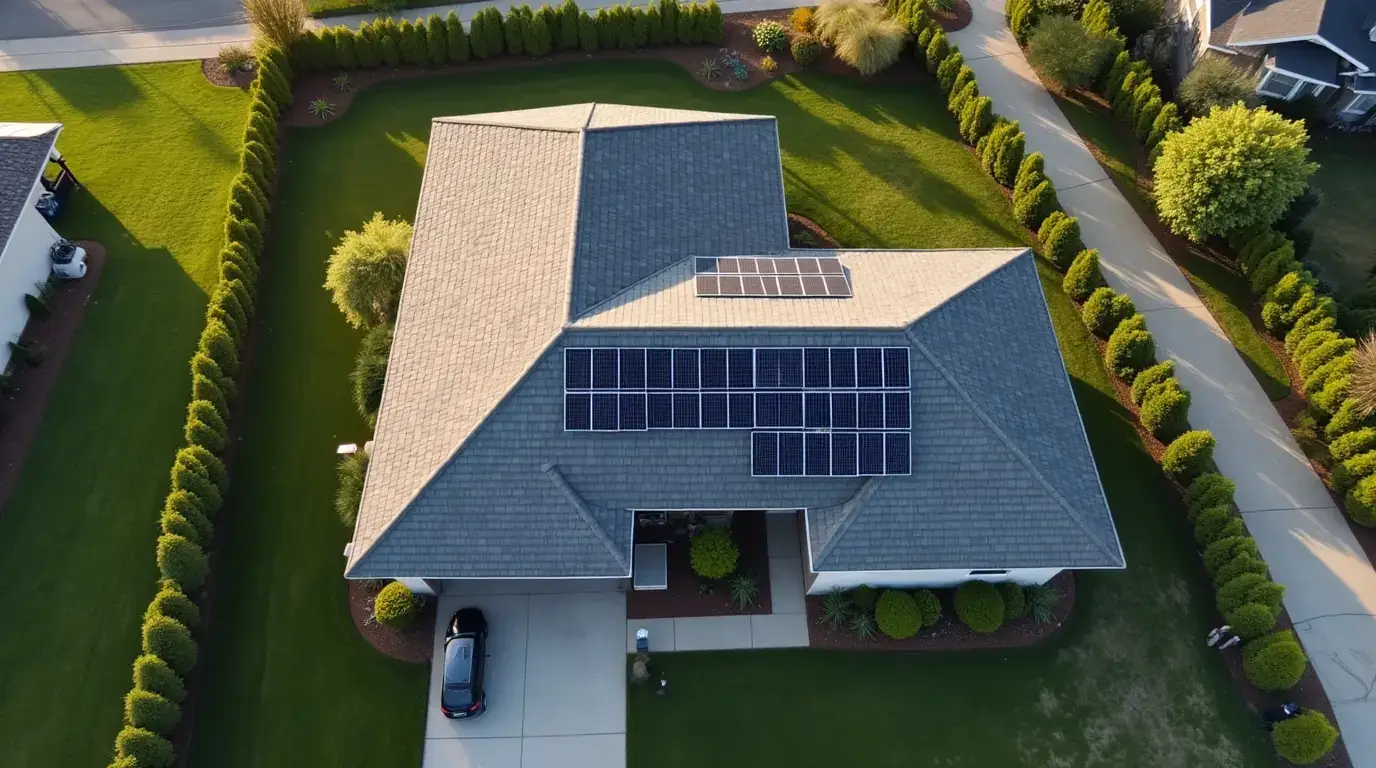In today’s push for renewable energy, many homeowners are turning to solar power for sustainability and cost savings. But how does a solar power system work? This blog will break down the key components and processes that convert sunlight into electricity, making solar energy an efficient and eco-friendly choice.
What is Solar Power?
Solar power is a form of renewable energy that harnesses the sun’s rays to generate electricity. Unlike fossil fuels, which are finite and contribute to environmental pollution, solar energy is abundant, clean, and sustainable. By capturing sunlight through specialised equipment, solar power systems convert it into usable electricity for homes, businesses, and even large-scale operations.
To understand how does a solar power system work, the process begins when sunlight hits solar panels, which are made up of photovoltaic (PV) cells. These cells convert sunlight into direct current (DC) electricity. However, since most appliances and devices use alternating current (AC), an inverter is used to change DC into AC electricity, making it compatible with standard electrical systems.
As the world increasingly focuses on reducing its carbon footprint and adopting green technologies, solar power stands out as a reliable and efficient energy source. Its ability to reduce energy costs and reliance on non-renewable resources makes it a popular choice globally.
Main Components of a Solar Power System
A solar power system consists of several essential components that work together to convert sunlight into usable electricity. Here are the key parts:
Solar Panels (Photovoltaic Cells)
Solar panels are the most visible component of the system. They consist of photovoltaic (PV) cells that capture sunlight and convert it into direct current (DC) electricity. The more panels installed, the more energy they can generate, making panel size and placement critical to efficiency.
Since most homes and businesses use alternating current (AC) electricity, the DC electricity generated by solar panels needs to be converted. The inverter performs this function, transforming DC into AC, making the energy usable for powering appliances, lighting, and electronics.
In off-grid systems or for those wanting backup power, batteries store excess energy produced during sunny periods for use when solar energy generation is lower, such as during the night or on cloudy days. This adds resilience to the system by ensuring consistent power availability.
Electrical Panel
The electrical panel distributes the converted AC electricity throughout the home or building, powering everything from lights to large appliances.
Utility Meter and Net Metering
For grid-tied systems, excess electricity can be sent back to the grid through net metering, where homeowners receive credits for the extra power generated. The utility metre tracks both incoming and outgoing energy flows.
These components work in sync to make solar power a reliable and efficient energy solution.
How Solar Power is Generated: Step-by-Step Process
Understanding how does a solar power system work is key to appreciating its efficiency and sustainability. Here’s a step-by-step breakdown of the process:
Step 1: Sunlight Hits the Solar Panels
The process begins when sunlight, which contains photons, strikes the solar panels. The panels are composed of photovoltaic (PV) cells that absorb the energy from the photons.
Step 2: Photovoltaic Cells Generate Direct Current (DC) Electricity
Inside each photovoltaic cell, the absorbed sunlight causes electrons to become excited and move, creating an electric current. This current is known as direct current (DC) electricity. However, most homes and businesses cannot use DC electricity directly.
Step 4: The Inverter Converts DC to Alternating Current (AC)
The DC electricity generated by the solar panels is sent to an inverter. The inverter converts the DC electricity into alternating current (AC), which is the standard form of electricity used to power most appliances and electronic devices.
Step 5: AC Electricity Powers Appliances in the Home
Once converted, the AC electricity is distributed to the electrical panel. From here, it powers everything from lights to kitchen appliances and other electronic devices in the home.
Step 6: Excess Electricity is Stored or Sent Back to the Grid
If more electricity is generated than is needed, the excess can either be stored in solar batteries for later use or sent back to the grid. For grid-tied systems, net metering allows homeowners to receive credits for the extra energy they produce.
Advantages of Solar Power Systems
Solar power systems offer numerous benefits, making them an attractive energy solution for homeowners and businesses alike. One of the key advantages is cost savings. By generating your own electricity, you can significantly reduce monthly energy bills, and with systems like net metering, you can even earn credits for excess power sent back to the grid.
Another major advantage is sustainability. Solar energy is a clean, renewable source of power that reduces reliance on fossil fuels, helping to lower greenhouse gas emissions and combat climate change. Unlike finite energy sources, solar power is abundant and can be harnessed in most locations.
Solar power systems also provide energy independence. Once installed, you become less reliant on external electricity suppliers, which is especially beneficial in areas prone to power outages. Additionally, with advancements in technology, solar panels are becoming more efficient and durable, requiring minimal maintenance while offering long-term savings and reliability.
Conclusion: How Does a Solar Power System Work?
Understanding how does a solar power system work highlights the simplicity and effectiveness of converting sunlight into electricity. With its numerous benefits, including cost savings, sustainability, and energy independence, solar power stands out as a reliable, eco-friendly solution for those looking to reduce their environmental footprint.
At Grid Solutions, we provide everything you need for a seamless solar power experience. Connect with us today to learn more and start powering your home with clean energy!

